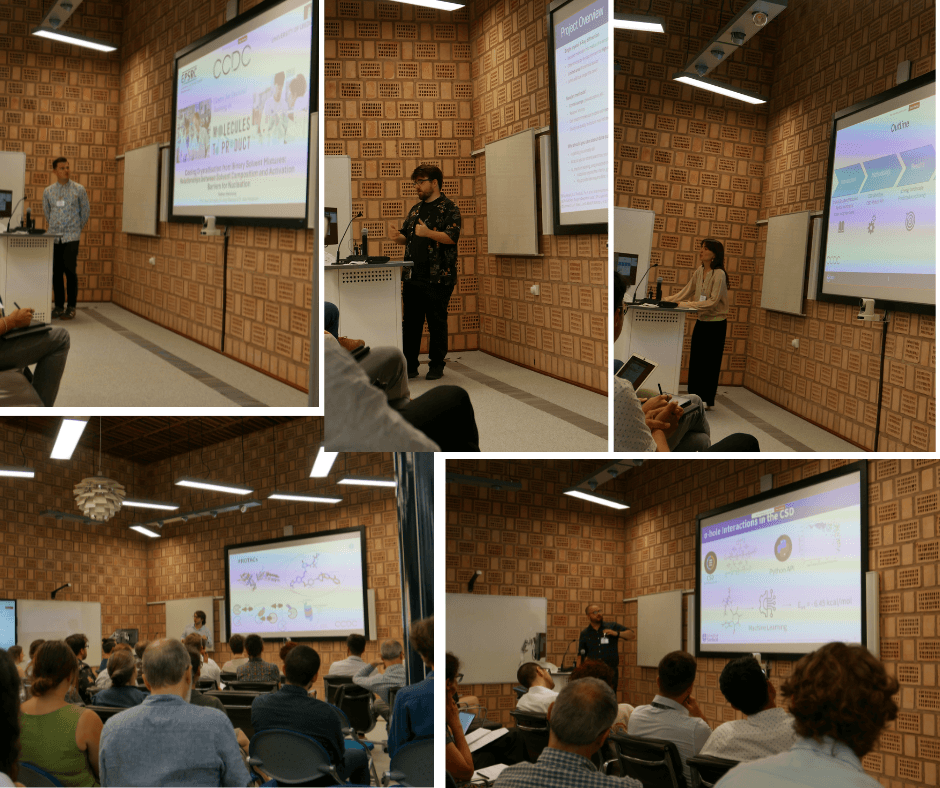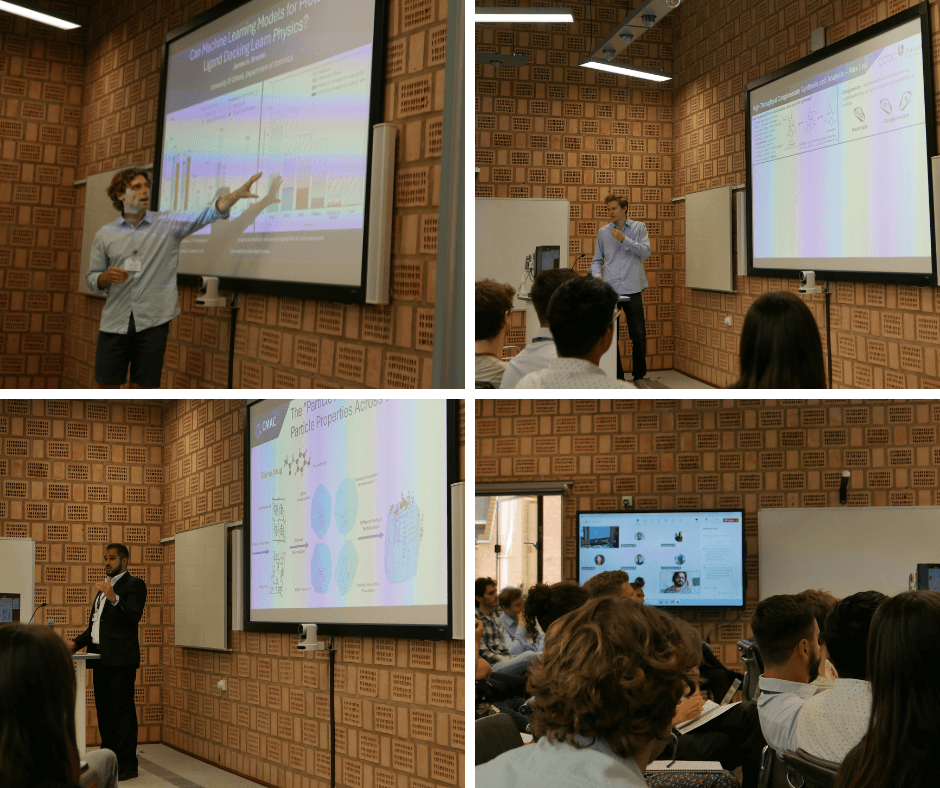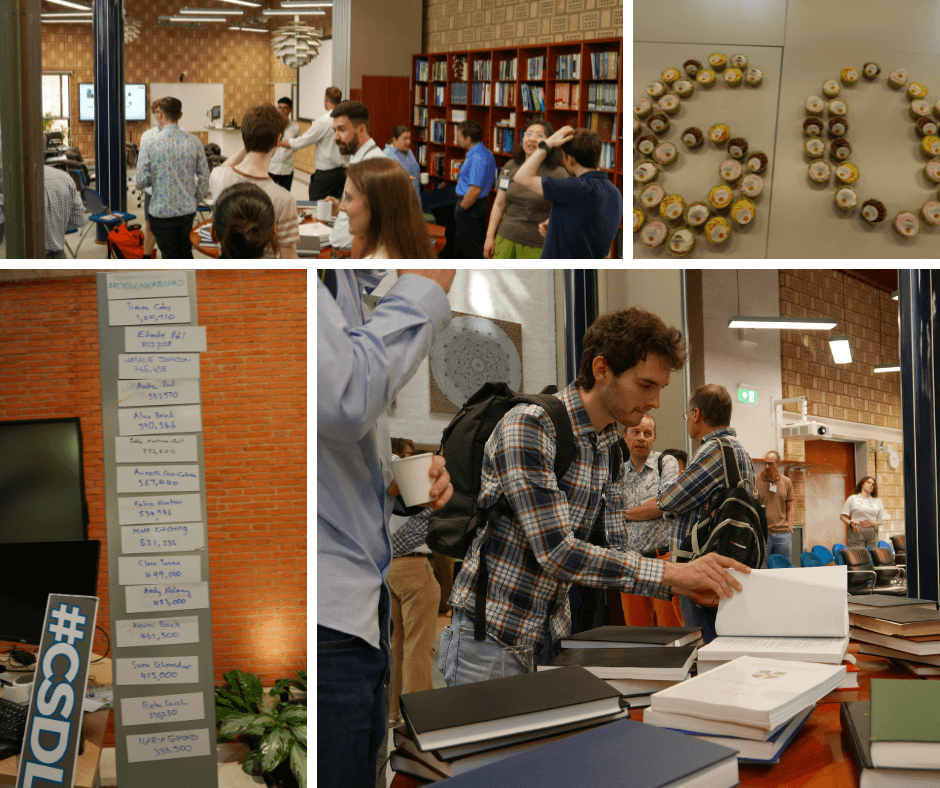Research Highlights from Our PhD Students
The latest PhD Students Science Day meeting brought together a dynamic group of early-career researchers, each tackling fascinating challenges in the world of crystallography, nucleation, molecular modelling, and drug design.
Fine-Tuning Crystallization Processes in Drug Development
Nathan Hennessy, a PhD student from the University of Leeds, has researched how thermodynamic factors shape nucleation and crystallization, critical processes in pharmaceutical manufacturing. Using histidine as a model compound, Nathan has investigated whether activation barriers during nucleation correlate with key product properties, including polymorphism and particle size. By measuring nucleation rates and applying a reversible aggregation model, he has calculated thermodynamic parameters such as entropy and enthalpy of crystallization.
Nathan has also examined how different co-solvents, including alcohols and glycols, affect solubility and crystallization. His results show that solvent structure plays an important role; glycerol, for example, promotes higher solubility due to stronger hydrogen bonding. Interestingly, the crystallization behaviour didn’t directly follow these solubility trends, and the Gibbs free energy remained consistent across solvents. Nathan’s research could open new pathways for fine-tuning crystallization processes in drug development.
Forecasting Polymorphism and Morphology
Emilia Prandini, a PhD student from Politecnico di Torino collaborating with the CCDC and Imperial College London, has combined Crystal Structure Prediction (CSP) with particle informatics to forecast polymorphism and morphology, two critical aspects of crystal behaviour. Her focus is xanthone, a natural antioxidant with promising medicinal potential.
Emilia used CSP to generate a crystal structure landscape and identified the global minima, which match closely with experimental data. Applying Particle Informatics, she predicted the likely morphologies of these structures, finding strong alignment between CSP lattice energies and morphological predictions. Her research lays the groundwork for better control of crystalline properties in pharmaceutical and materials science. Next, Emilia aims to extend this approach to explore surface properties and packing.
Understanding Non-Covalent Interactions in Crystals
Harry Nash, who recently completed his PhD at the University of Sheffield, collaborated with Lee Brammer and Grant Hill to predict σ-hole interaction energies. His work focused on halogen bonding and other σ-hole interactions, a growing area in crystal engineering. Using a large dataset from the Cambridge Structural Database (CSD) and machine learning models, Harry built a predictive tool for interaction energies validated against high-level DFT calculations.
By investigating geometric factors like contact distances and angles, Harry uncovered key trends in σ-hole interactions between different donors and acceptors. His consistent, large-scale dataset now serves as a valuable resource for computational chemists and experimentalists aiming to understand non-covalent interactions in crystals.
Harry has been honoured as a co-recipient of the Turner Prize, recognizing the best PhD thesis in Chemistry at the University of Sheffield.
Refining Complex Models
Aaron Horner tackled a tricky challenge in structural chemistry: assessing the quality of molecular models, particularly crystal sponges. He highlighted the pitfalls of relying solely on traditional descriptors like the R-factor, which can be misleading due to disorder, overlap, or solvent ambiguities.
To address this, Aaron introduced a distortion score that quantifies geometric distortions by measuring changes in bond lengths and angles as restraints are adjusted. He also presented a bond likelihood score tool, which assesses the plausibility of bonds based on probability density functions from crystallographic data. These tools give structural chemists practical, real-time feedback to refine complex models, especially valuable for early-career researchers.

Understanding Protein Structures
William Midgley focused on PROTACs (proteolysis-targeting chimeras), innovative molecules that harness the body’s natural degradation machinery to eliminate disease-causing proteins. Unlike traditional drugs, PROTACs can target “undruggable” proteins without clear active sites, but they come with challenges, including large size and limited bioavailability.
William’s research used computational pipelines and molecular dynamics to design and rank PROTACs for challenging targets, including the Epstein-Barr virus protein ENBA. His next steps aim to enhance computational models, optimize PROTAC linkers, and apply advanced techniques like cryo-EM to understand protein structures better.
Our lightning talk session spotlighted the impressive progress of the 1st and 2nd year PhD students, Alex D. Lee, Henry James Broster, Omar El-Habbak, and Henry Holleb, who shared snapshots of their developing research. We also gave a warm welcome to Paulo Nunes de Souza, who joined us from the University of São Paulo, Brazil, this March to start his PhD journey.

We wrapped up the day with a lively panel discussion featuring former CCDC-sponsored students who shared invaluable advice on navigating career paths, followed by a well-earned CSD60 celebration, complete with cake and good company.
Thank you to everyone who shared their work and joined us for a day of inspiring science and community. We look forward to seeing where your research takes you next!
Find out more about our sponsored PhD programme.
